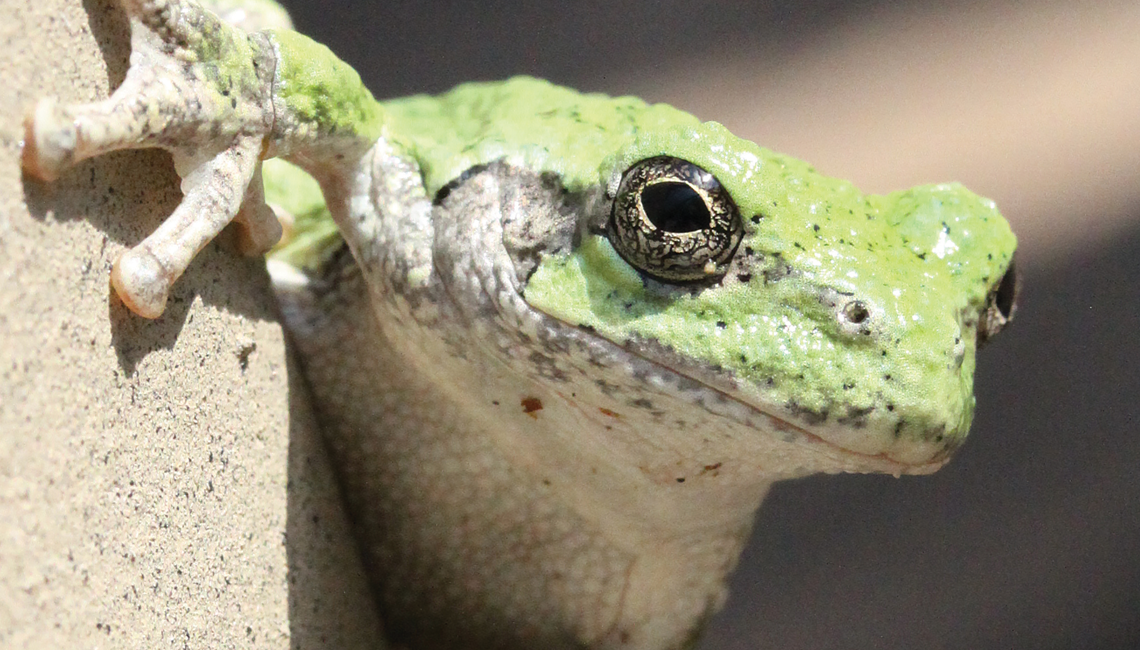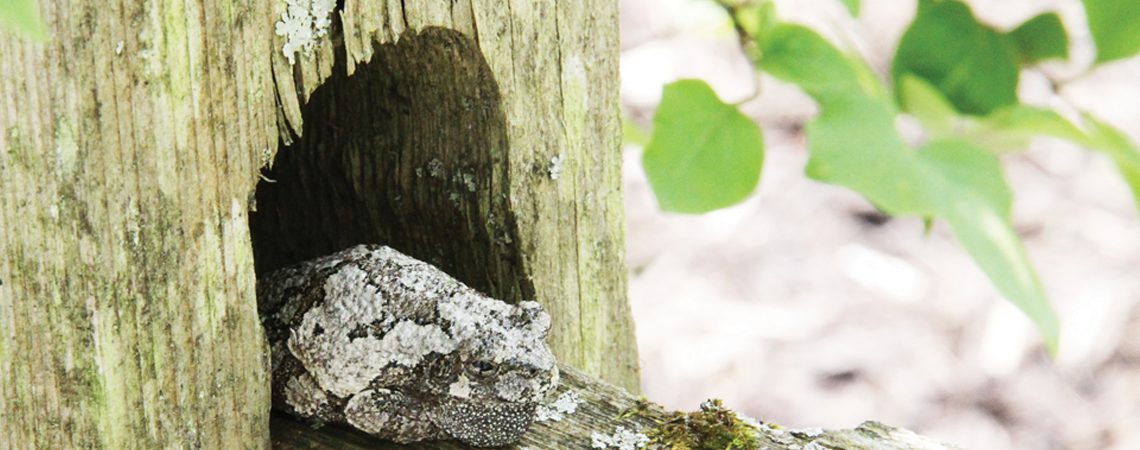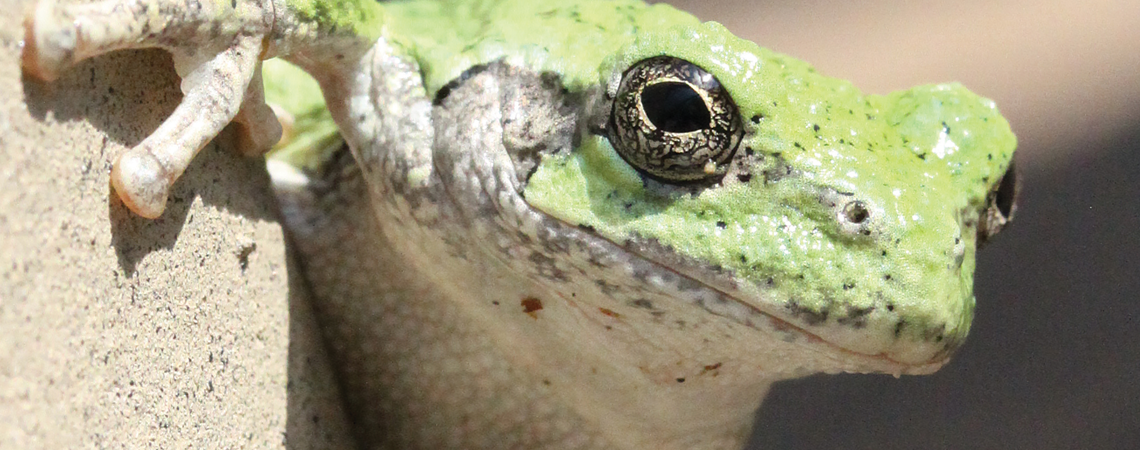Even if you didn’t quite recognize it, you’ve likely heard the sound. Just before or after a summer rain shower, a loud, short trill — just 1 to 3 seconds long — emanates from a nearby tree. Was it a bird? It may have sounded something like a red-bellied or red-headed woodpecker. In reality, it’s a gray treefrog, making one of the most distinctive sounds of summer.
Why do gray treefrog calls usually coincide with rainfall? “As an amphibian, gray treefrogs need to maintain their moist skin to survive,” says Greg Lipps, a member of Malinta-based Tricounty Rural Electric Cooperative, who is also the amphibian and reptile conservation coordinator at Ohio State University. “Rainfall fulfills that moisturizing requirement for the frogs, so precipitation often spurs activity, such as calling and breeding.”
The action of the gray treefrog calling is the most energy-expensive activity measured in any cold-blooded vertebrate.
Some gray treefrogs also call outside of the breeding season — generally April through June in Ohio — but why they do so is a mystery. “It isn’t uncommon to hear a male calling from high in the trees in late summer or early fall,” Lipps says.
Measuring no more than 2 inches long, the gray treefrog is the largest treefrog in the northern United States; it’s found throughout Ohio. Mainly arboreal, the frogs come down out of the trees during breeding season, congregating in vernal pools.
“Those temporary spring pools, swamp forests, the margins of ponds and lakes, flooded agricultural fields, and even water-filled tire ruts are all used for egg deposition,” says Lipps. “In general, the main requirements are that the water is not flowing and will remain long enough for the eggs to hatch and the tadpoles to complete their metamorphosis into young frogs, which usually takes about six weeks.”
Gray treefrogs are masters of camouflage. Even if one is close to eye level in a shrub or tree and calling continually, finding it can be a real challenge. You’d swear it was right in front of you — which it probably is — but you still can’t see it.
The frogs have chameleon-like capabilities, changing their skin color from a neon green to a splotchy pearl-gray, depending upon the background they’re against (especially lichens). The transition is not instantaneous, usually taking one to several hours to complete, but is nevertheless dramatic. A light-colored spot on each side of their head, however, just below the eyes, doesn’t change color, nor does the bright yellow on the inside of their thighs.
Sticky adhesive toe disks allow a gray treefrog to make a series of serious acrobatic moves when catching insects. The frog may even dangle from one foot for a few seconds before righting itself and regaining its balance.
The cute little critters have one more distinctive behavior, having to do with hibernation. “Most frog species avoid freezing by spending the winter underwater or underground, below the frost line,” says Lipps, “but not the gray treefrog. Instead, it burrows under leaf litter, passing the winter at the interface of leaf litter and soil. During cold weather, glycogen in its liver is converted to glucose and glycerol, which prevents the frog from completely freezing. Amazingly, up to half of the water in its body may freeze without killing the frog.”
A second Ohio treefrog species — Cope’s gray treefrog — is found in the southern third of the Buckeye State. It looks identical to its northern relative, but the Cope’s has a faster, harsher trill than that of the melodious, mellow gray treefrog. A southern Ohio accent, perhaps?
W.H. “Chip” Gross is Ohio Cooperative Living’s outdoors editor.











